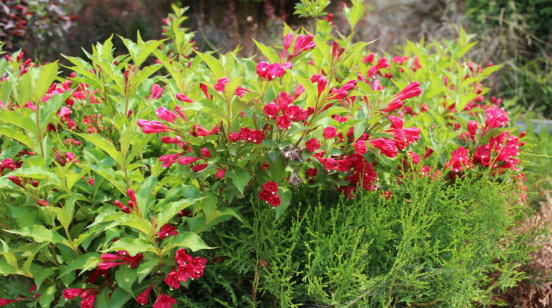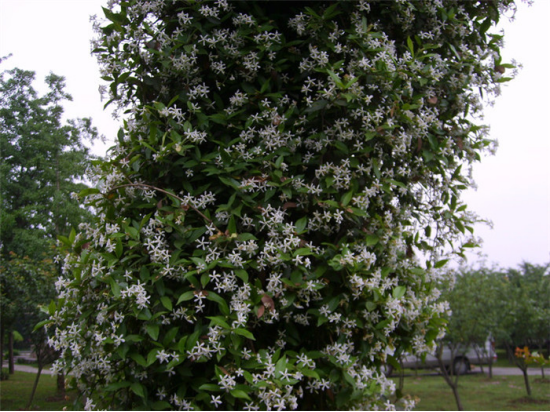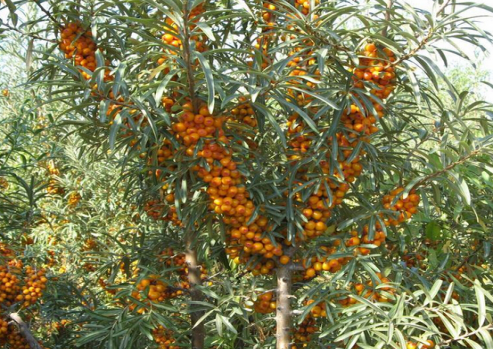Culture method of brocade flower
Soil
Brocade flower has strong adaptability, is easy to cultivate and grows rapidly. generally, sandy soil with good drainage needs to be selected as the cultivated soil, and there are many propagation methods, such as sowing, cutting and striping. Sowing as an example, sowing needs to be sowed in windless weather.
Fertilizer application
Before flowering in early spring, once mature compost is applied, it can bloom luxuriantly year after year. Composting is a kind of organic fertilizer made from animal and plant remains and excreta containing waste components and decomposed by microorganisms under certain conditions. Fertilize once or twice a month during the growing season.
Watering
Pay attention to watering the brocade flowers in the growing season, and gradually increase the amount of water after spring comes. Keep the soil moist. Summer is a high-temperature season, but also to ensure adequate water, and pay attention to cooling, if necessary, transfer to a cool place. During the planting period, it is necessary to water thoroughly at least twice a month in order to meet the growth needs of brocade flowers.

Prevention and cure
Strong cold resistance, like deep and moist and humic soil, but afraid of waterlogging, so it needs to be planted in the sun. There are not too many diseases and insect pests in this flower, and occasionally aphids and red spiders are harmful, which can be sprayed with dimethoate.
After knowing the culture method of brocade flower, do many flower friends also want to know the value of brocade flower? Next, let's introduce the value of brocade flowers.
How to cultivate Brocade Flower Culture methods and matters needing attention
Brocade belt with dense branches and leaves, colorful flowers, suitable for courtyard wall corner, lakeside group planting. The flowers and colors of brocade belt make people feel happy, so many friends also breed at home. What is the method of brocade flower culture? Then Xiaoqi shared the methods and points for attention of brocade flower culture.
I. the method of brocade flower culture
1. Soil: brocade flowers need deep, moist, humus-rich soil.
2, humidity: brocade flowers like light, shade-resistant, cold-resistant, afraid of waterlogging, suitable air humidity is 65% 75%.
3. Temperature: the suitable temperature for the growth of brocade flower is 15 ℃ ~ 30 ℃, the suitable temperature for flowering is 18 ℃ ~ 22 ℃, it is resistant to low temperature, and the north can survive the winter in the open field.
4. Lighting: brocade flowers like a warm, humid, sunny environment.
5. Fertilization: when brocade flowers are planted in pots, 3 parts of garden soil and 1 part of rice chaff ash can be mixed, plus a small amount of barnyard manure as base fertilizer. After using mature compost as base fertilizer during planting, the root was ditched and applied every 2 to 3 years during the dormant period in winter or early spring. Fertilization and watering should be timely every month in the growing season. After sprouting in spring, the amount of water should be gradually increased to keep the soil moist.
6. Watering: pay attention to watering the brocade flowers during the growing season. After sprouting in spring, the amount of water should be gradually increased to keep the soil moist. High temperature and drought in summer are easy to make leaves yellow, dry and withered, so it is necessary to maintain sufficient water and spray water to cool or move to semi-shady and humid places for maintenance. Water should be watered once or twice a month to meet the growth needs.
7. Pruning: the growth period of brocade flower is longer, and the top branchlets are often not full before winter, and are easy to dry up when overwintering. Therefore, the dry and withered branches at the top of the plant and other old and weak branches, disease and insect branches should be cut off and cut short and long branches before sprouting in spring every year. If there is no seed, the residual flower branches should be cut off in time after flowering, so as not to consume too much nutrients and affect the growth. Branches that have been growing for 3 years should be cut off from the base to promote the robust growth of new branches. Because the new technique of its inflorescence germinates on 1-2-year-old branches, it is not suitable to prune the branches of the previous year at the beginning of spring, usually only withered branches are removed.
8. Propagation methods: there are four methods for propagation of Brocade flower: cutting, striping, plant division and sowing.
II. Matters needing attention in brocade flower culture
1. For those who like to cultivate brocade flowers, one thing must be paid attention to: the seeds should be germinated before sowing. One week before sowing, soak the seeds in cold water for 2-3 hours, fish them out and put them in the room, wrap them with a wet cloth and sow them after germination, the effect is better.
2. In the cultivation of brocade flower, it is best to sow in the weather of no wind and no rainstorm in the near future, and the bed surface should be leveled and fine. The sowing method can be bed sowing or strip sowing, the sowing amount is 2g/ square meters, the thickness of covering soil after sowing can not exceed 0.3cm, keep the bed moist within 30 days after sowing, and emerge seedlings about 20 days.
The above is the brocade flower culture methods and points for attention to share, brocade flower culture process should pay attention to watering and change the pot soil, hope to be helpful to everyone.
The culture method of Brocade flower
The brocade belt flower is also known as the five-color begonia, mountain fat hemp, sea immortal flower and so on. It is a deciduous shrub of the honeysuckle family, with dense branches and leaves and colorful flowers, and the flowering period can be as long as more than a month. It is suitable for group planting in the corner of the courtyard wall and by the lake. It can also be planted in the edge of the forest for hedgerow and cluster planting, embellished in rockery and sloping land. Let's take a look at the breeding method of brocade flower.
The growth habit of Brocade
Brocade flowers are distributed in Heilongjiang, Jilin, Liaoning, Inner Mongolia, Shanxi, Shaanxi, Henan, northern Shandong, northern Jiangsu and other places in China. They are born under the mixed forest or in the bushes at the top of the mountain at an altitude of 100m to 1450m. Like light, shade tolerance, cold resistance, lax requirements on the soil, can withstand barren soil, but to deep, moist and humus-rich soil growth is the best, afraid of waterlogging. Strong sprouting ability and rapid growth.
The Propagation method of Brocade
1. Sowing: the seeds can be collected from September to October, soaked in cold water for 2-3 hours in direct seeding or one week before sowing. Sowing in no wind and no rainstorm weather in the near future, the bed should be flat and fine. The sowing method can be bed sowing or strip sowing, the sowing amount is 2 grams / square meter, the thickness of covering soil after sowing can not exceed 0.3 cm, keep the bed moist within 30 days after sowing, and emerge seedlings about 20 days.
2. Cutting: the variation type of brocade flower should be raised by cutting, and it is difficult for seed propagation to maintain the characters after variation. The ground temperature is required to be 25: 28 ℃, the air temperature is required to be 20: 25 ℃, the air humidity in the shed is 80% to 90%, and the transmittance is about 30%. It can take root in 50-60 days, and the survival rate is about 80%.
3. Striping: the brocade flower can be pressed into the soil for strip reproduction in the growing season, and the lower branch is usually selected after flowering. The lower branch is easy to be creeping, and the node is easy to take root and survive.
4. Ramet: the ramet propagation of Brocade is usually carried out in early spring and autumn and winter, and is usually carried out in combination with transplanting before and after germination in spring. The whole plant is dug up, divided into several clusters and planted separately.
The culture method of Brocade flower
1. Fertilization: when brocade flowers are planted in pots, 3 parts of garden soil and 1 part of rice chaff ash can be mixed, plus a small amount of barnyard manure as base fertilizer. Rotten compost was used as base fertilizer when planting, and then ditched in the root every 2 to 3 years during the dormant period in winter or early spring. Fertilize once or twice a month during the growing season.
2. Watering: pay attention to watering the brocade flowers during the growing season. After sprouting in spring, the amount of water should be gradually increased to keep the soil moist. High temperature and drought in summer are easy to make leaves yellow, dry and withered, so it is necessary to maintain sufficient water and spray water to cool or move to semi-shady and humid places for maintenance. Water should be watered once or twice a month to meet the growth needs.
3. Pruning: the growth period of brocade flower is longer, and the top branchlets are often not full before winter, and are easy to dry up when overwintering. Therefore, the dry and withered branches at the top of the plant and other old and weak branches, disease and insect branches should be cut off and cut short and long branches before sprouting in spring every year. If there is no seed, the residual flower branches should be cut off in time after flowering, so as not to consume too much nutrients and affect the growth. Branches that have been growing for 3 years should be cut off from the base to promote the robust growth of new branches.
4. Diseases and insect pests: there are not many diseases and insect pests in brocade flowers, occasionally harmed by aphids and red spiders, which can be sprayed with dimethoate.
- Prev

Key points for the maintenance of Luoshi:
1. Pot planting is suitable for both the Yellow River basin and the south of the Yellow River, while potted plants can only be planted in the north. Luoshi is not picky, from slightly acidic soil to neutral soil, from sandy soil to light clay, can also grow in weak alkaline soil, but the growth is slightly worse. 2. Watering Luoshi likes to be moist
- Next

Culture methods of Hippophae rhamnoides
Light, temperature Hippophae rhamnoides is not very strict on the temperature requirements, very resistant to hot and cold, down to-50 ℃, up to 50 ℃, is not a problem. Hippophae rhamnoides likes light, and the annual sunshine hours are as long as possible. Hippophae rhamnoides is very resistant to barren, and can survive if the annual precipitation is more than 400 mm, but pay attention to avoid stagnant water.
Related
- Fuxing push coffee new agricultural production and marketing class: lack of small-scale processing plants
- Jujube rice field leisure farm deep ploughing Yilan for five years to create a space for organic food and play
- Nongyu Farm-A trial of organic papaya for brave women with advanced technology
- Four points for attention in the prevention and control of diseases and insect pests of edible fungi
- How to add nutrient solution to Edible Fungi
- Is there any good way to control edible fungus mites?
- Open Inoculation Technology of Edible Fungi
- Is there any clever way to use fertilizer for edible fungus in winter?
- What agents are used to kill the pathogens of edible fungi in the mushroom shed?
- Rapid drying of Edible Fungi

